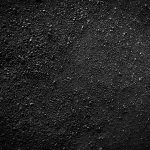Types of Asphalt Damage
Types of Asphalt Damage
Descriptions, Preventions and Solutions
What causes asphalt concrete to show wear and damage? What causes asphalt concrete failure? It’s obvious that these road surfaces are not meant to last forever, but what are some of the major problems that can affect them, and is there anything that can be done to prevent damage? When you see a construction crew filling a pothole or resealing a road, why now? Why did the problem happen in the first place?
Asphalt Concrete doesn’t have to be a mystery. Here are many of the common problems that affect asphalt surfaces, their causes, and the best way to take care of them. Welcome to the long road of asphalt knowledge (hopefully it won’t need to be paved again before it’s recommended service date).
Cracking
Alligator Cracking (Fatigue Cracking)
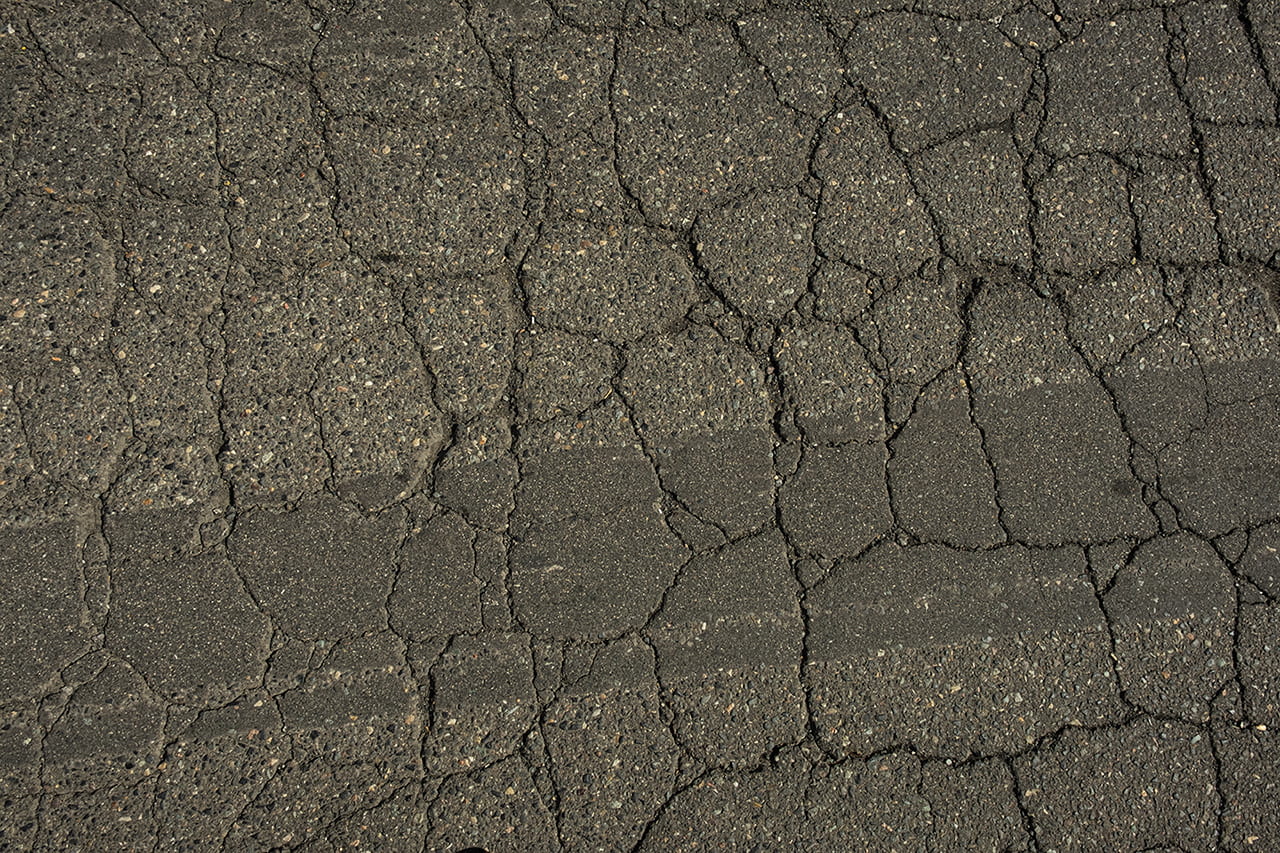
Alligator cracking is probably the most common problem affecting asphalt concrete. They are the result of structural problems, usually under the surface. If a lot of heavy vehicle drive over a surface, the bottom layers compress, resulting in cracking along the top surface. These cracks form odd patterns that look like alligator scales, hence the name alligator cracks.
Because these cracks indicate problems under the surface, the entire area with alligator cracks will need to be removed and replaced. Since the last application did not take the weight of vehicles that would be moving over it into account, the replacement asphalt concrete should be applied for that heavier weight.
Block Cracking / Joint Reflection Cracking
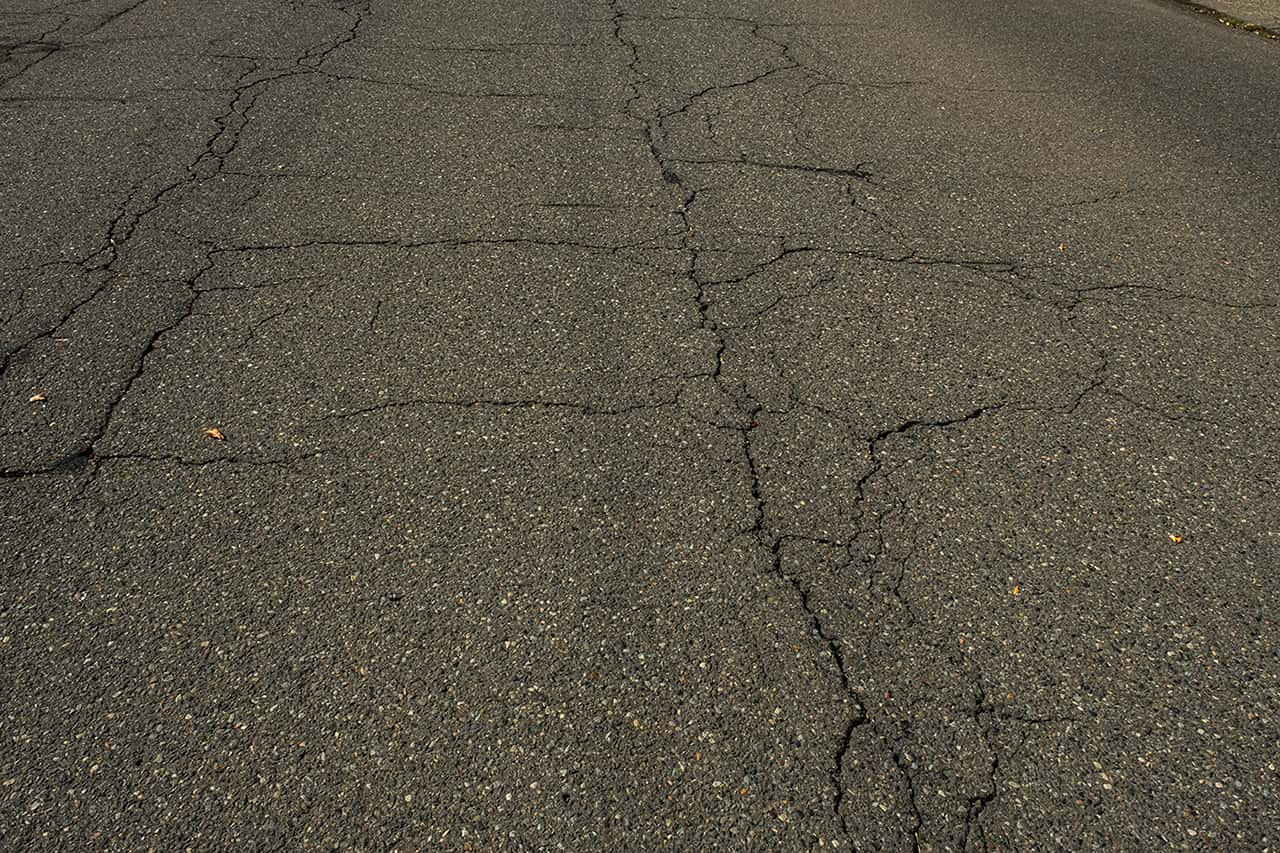
If seasonal temperatures cause the surface to expand and contract, the concrete blocks that are underneath the asphalt concrete may form cracks around them that make them more visible. This is caused by not premixing the asphalt concrete recipe to handle season density changes.
The concrete underneath is clearly still in fine shape, but the asphalt has shown itself to be poorly mixed. The problem asphalt will need to be removed and replaced with a more flexible mix to ensure the same problems don’t return.
Longitudinal (Linear) Cracking
These cracks are usually the result of joint separation like Block cracks. They form parallel to the pavement centerline and can run along much of the roadway if affected. They may be the result of pavement fatigue (where the road experiences weight beyond what it is designed to withstand) or reflective cracking.
Joints are typically the least dense areas of the roadway, so it makes sense that these zones would be the first to show wear. If the crack isn’t too deep, it can be sealed to prevent moisture from penetrating the top surface and damage the under layers. If the crack is too wide, the surface will have to be repaved, with the new mix better suited for seasonal density changes and the expected vehicle weight on the road.
Transverse Cracking
These cracks are perpendicular to the road centerline, and are usually caused by seasonal temperature changes that cause the road surface to shrink. They may also be caused by reflective cracks.
Like Longitudinal cracks, smaller transverse cracks can be resealed to prevent moisture from sinking into the undersurface. Larger cracks usually speak to paver problems beneath the asphalt pavement, so the whole surface will need to be removed and replaced for lasting road healing.
Edge Cracking
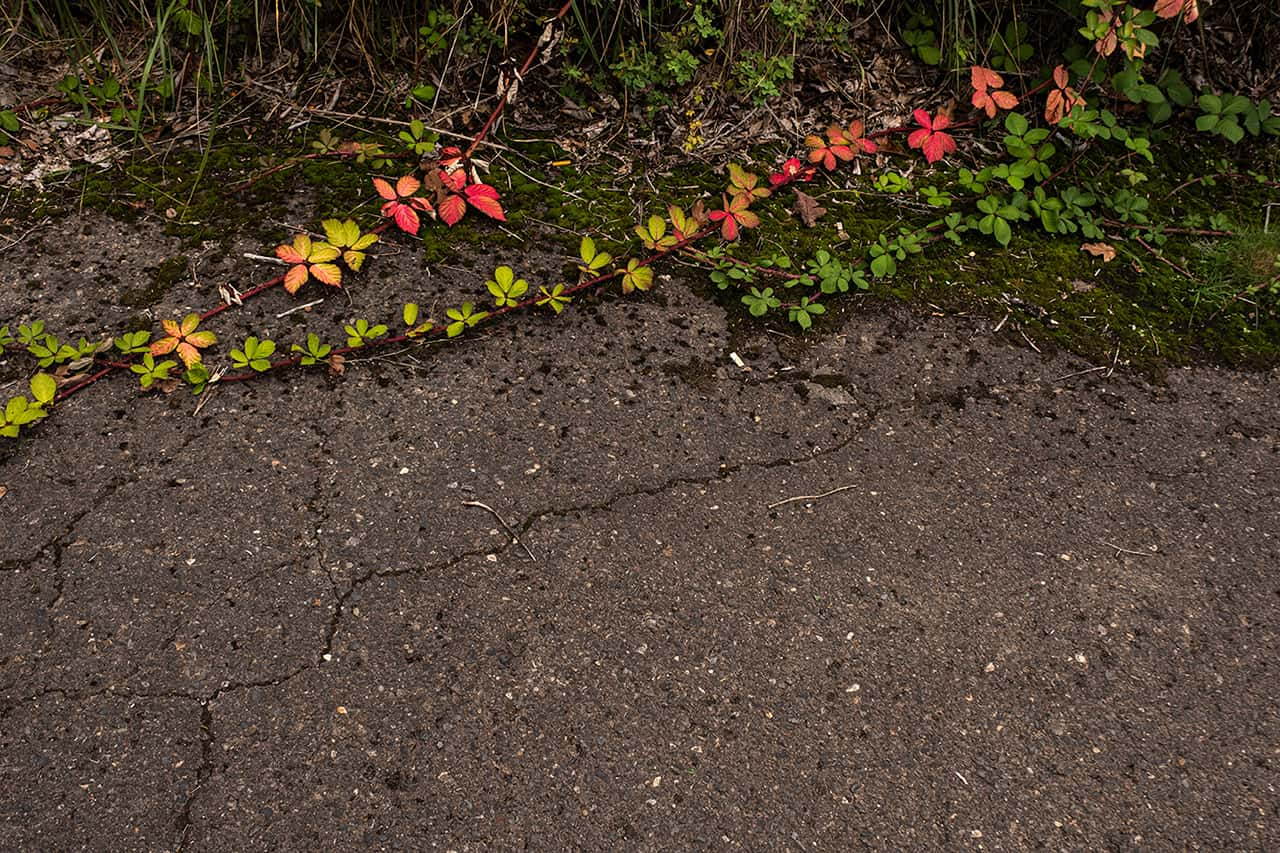
Damage to the edge of road surface occurs when water is able to seep under from direct contact with dirt or other organic substrates. This is caused by poor drainage along the road. Heavy vehicles driving too close to the edge of the road also put added stress on these areas, causing them to crack and shift the roadway outward.
The first step to correcting edge related problems is to remove any plants or overabundance of organic material directly touching the roadway. After that smaller cracks can be filled with a crack seal and the existing substrate can be replaced with gravel or a similar well draining mixture to prevent subsequent moisture buildup.
Slippage Cracking
Slippage cracks are half-crescent in shape and clearly show the top surface separating from the under-surface. These marks look like stretch-marks, with part of the surface stretched over the top of the undamaged surface. This separation is most likely caused by a lack of adhesion between the layers. This may have been caused by the road installer failing to use a bonding agent between layers, typically a tack coat. Contamination from dirt or oil can also cause the bonding agent to fail.
Because this sort of damage is caused by a problem under the road surface, the area surrounding the crack will need to be removed and re-laid. This will require a partial or full depth patch in order to repair.
Distortions
Depressions (bird baths)
Depressions are areas of the road with obvious dips not caused by cracks or pavement loss. They are often called bird baths as these divots often fill with water, and these shallow pools resemble your typical gardenstore birdbath. If a construction firm fails to properly compact the foundation of the road surface, it’s sure to settle and result in sunken grade in the surface. Depressions can also be the result of damage under the roadway, from moisture seepage or other settling problems. Heavy vehicle weight can make these problems occur faster.
Problems that result in depressions are under the road surface. Since the road was most likely incorrectly compacted, the entire affected area down to the subgrade. The subgrade will need to be filled and then patched over.
Rutting
Rutting is a very common problem on road surfaces, and are the sort of problem that will occur even if everything has been done correctly in the construction of the roadway. Rutting is caused by lots of vehicles traveling down the roadway over a long period of time resulting in clear areas of wear where tires most commonly travel. Heavily rutted pavement can point to deeper problems. These might include poor compaction of road layers during construction, rutting of the subgrade, or a poorly designed asphalt concrete mix, causing the road surface to dissolve faster.
Normal pavement rutting shows a need for a new road surface. Deeper rutting could show the need for more serious repairs, such as subgrade replacement or better compaction.
Corrugation and Shoving
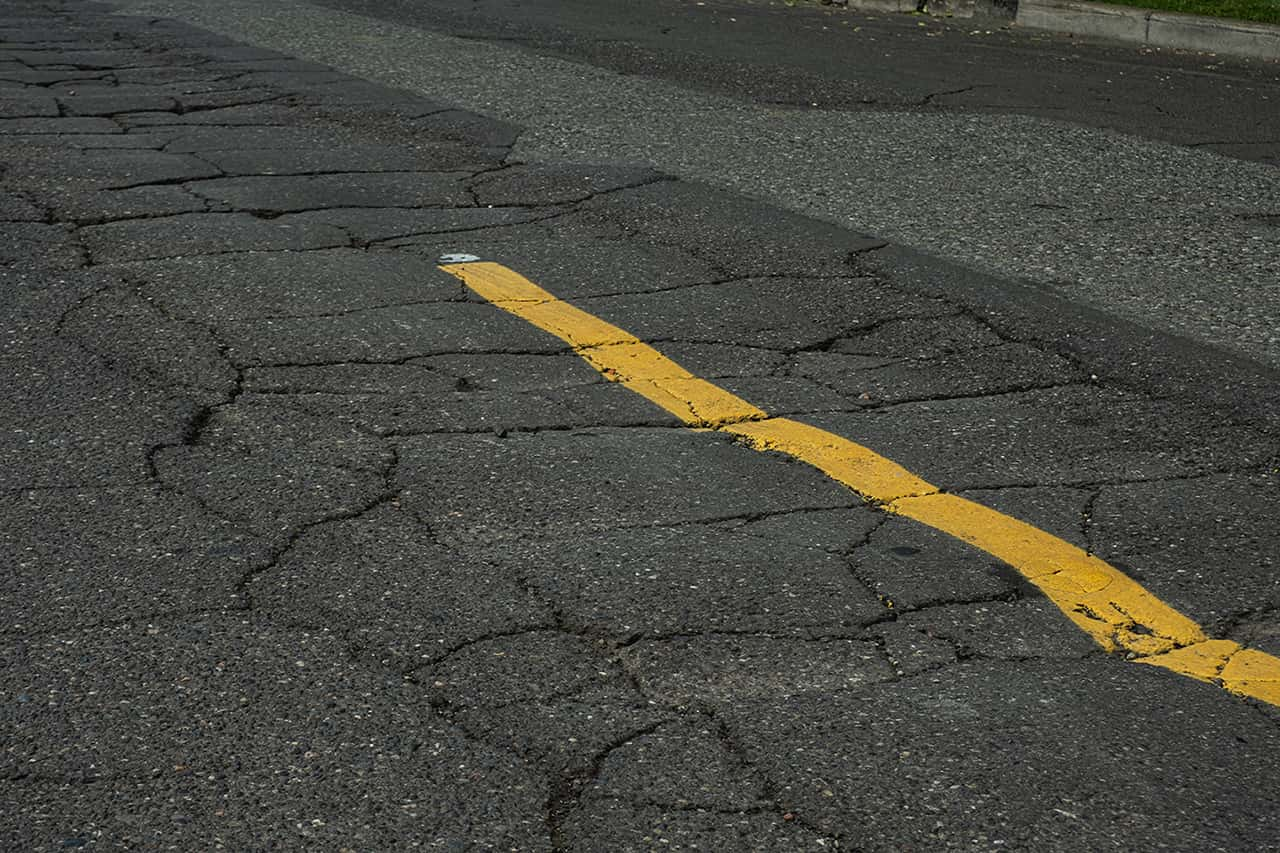
Corrugation looks like ripples in the road surface while shoving looks like waves. These unusual shapes are created by vehicles stopping and starting on the roadway. This sort of traffic action shouldn’t be enough to cause this sort of pavement harm on its own; one of the under-layers is typically also unstable, allowing the top surface to develop wrinkles over that surface. This can also be caused by excessive moisture under the road surface.
If the corrugation or shoving is localized, the reason for the condition can be discovered and treated without removing too much of the road surface. Really any areas of damage will need to be removed and replaced, including the damaged sublayer.
Upheaval
Upheaval is localized area of the road that has swelled to create a raised area of the road, typically with a crack forming through the center of the raised area. This type of pavement blemish is caused by swelling of the subgrade. I might be caused by expansive soil or ice forming and expanding under the pavement. The most common cause of upheaval in the Pacific Northwest is probably the growth of tree roots, which crowd out road pavement and concrete sidewalk slabs.
A full deep patch is required to fix upheaval issues. This may mean the removal of tree roots or the replacement of the subgrade.
Failed patches
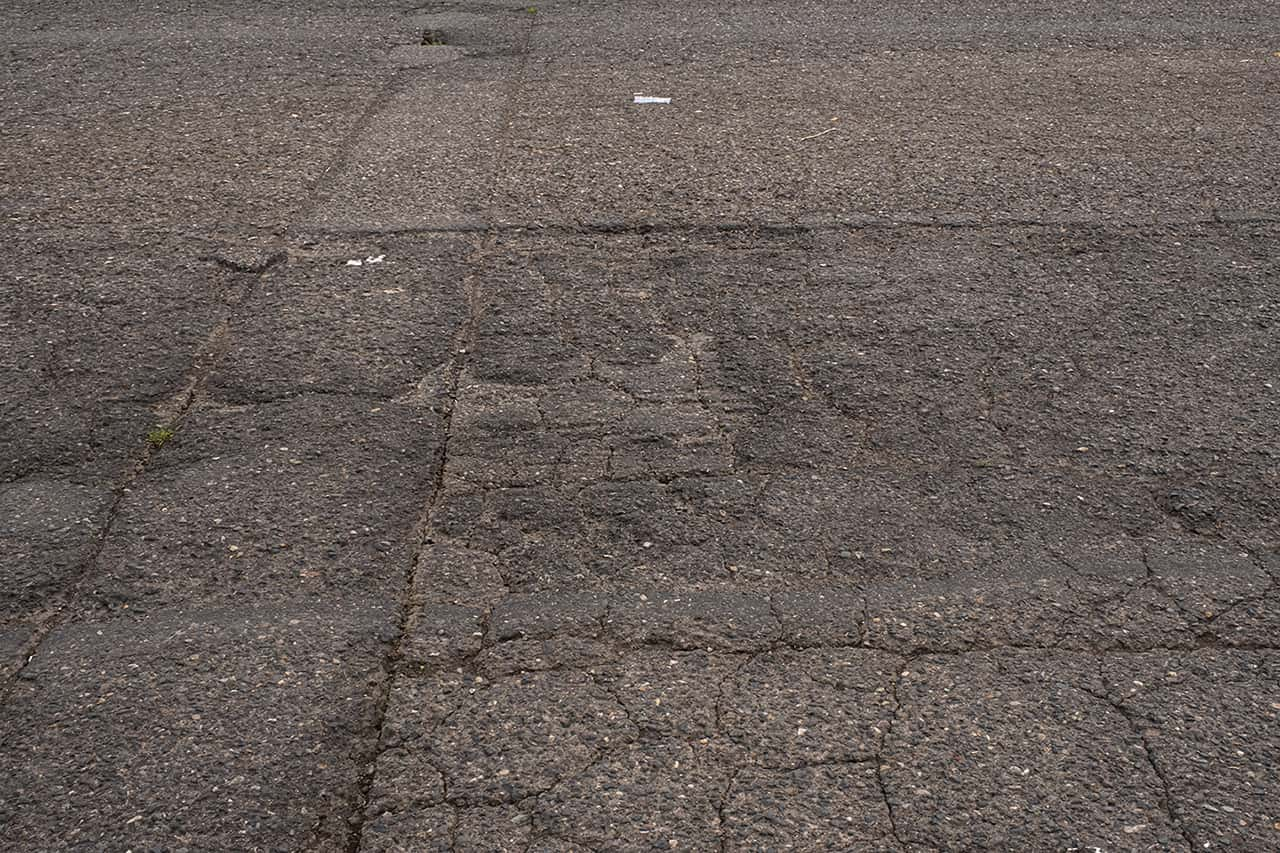
Unfortunately all patches on roadways are considered a defect that can cause problems for drivers. A patch is a temporary fix until the entire road surface can be properly maintained. Even the best patches create new points of weakness on the roadway that are bound to develop issues faster than the surrounding road surface. If a small ridge or lip is created by the new asphalt patch, every vehicle tire will rub on that new edge, increasing the likelihood of it failing. Patches might also be poorly mixed, causing the surface to dissolve and wash away.
A patch is only a temporary solution to the road problem. Removing and replacing the patch will help in the short turn, but if a patch has failed, repaving the entire road surface is your best option to limit continued damage.
Disintegrations
Raveling (very porous asphalt)
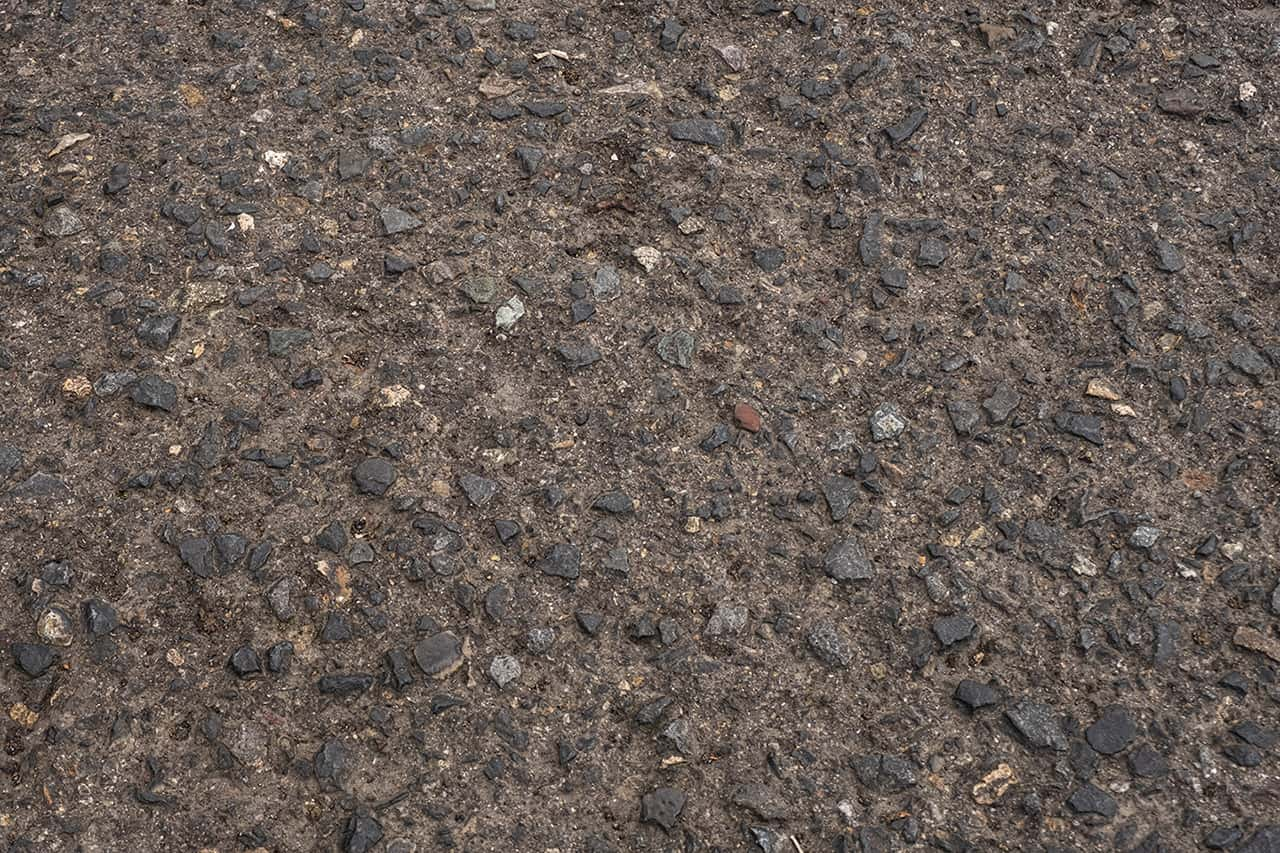
Raveling is the slow disintegration of the road surface, with a number of different possible causes. It might be that the asphalt concrete was mixed incorrectly, which is allowing smaller pieces of the surface to break their bond with the asphalt and wash away in the rain or after heavy vehicles drive over the road surface. Since raveling creates an uneven pavement surface, it can fill with water causing dangerous vehicle hydroplaning.
Sometimes a seal can be used over the road surface to temporarily repair the damage of raveling. A fog seal or a slurry seal might be the right solution. If the problem is more related to the cement mix, the road surface will need to be removed and replaced. Luckily the surface is recyclable!
Potholes
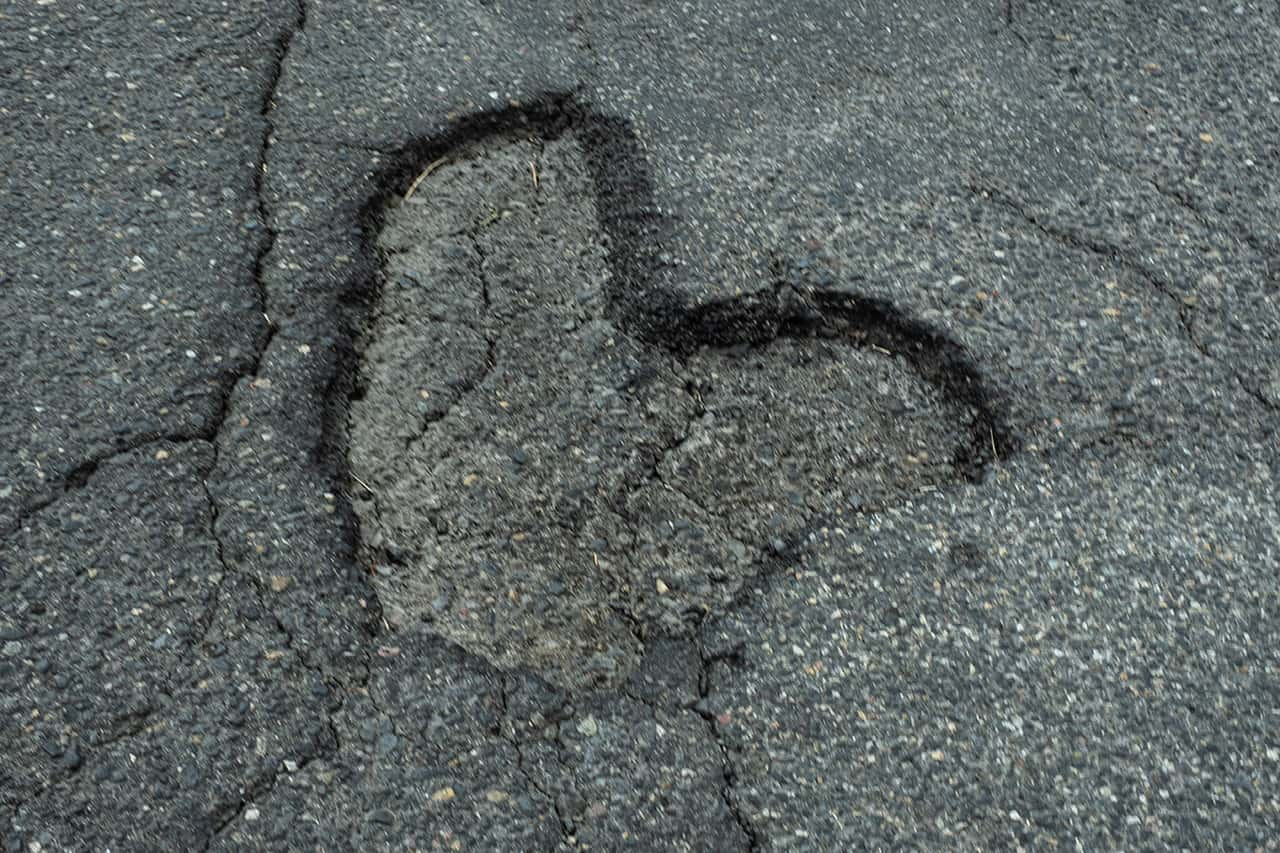
This is the classic asphalt damage. It’s the one you are most likely to notice, and has the best chance of damaging your vehicle if you maneuver over the obstacle poorly. A pothole is usually an Alligator crack or collection of alligator cracks, that have been left untreated until pieces of asphalt become completely dislodged and leave the road surface, revealing the concrete underlayer. These are the result of compounding issues; a bad alligator crack is left unmended, ice or dirt and later growing plants, fill the gaps, making them larger and weakening the material further. Eventually semi trucks and other large vehicles dislodge small pieces of the crack, turning it into a hole, which quickly grows in size due to the added stress of tire wear on its edges.
An asphalt patch is the most common solution for repairing a pothole. Because the sublayer has been damaged, even a patch will not keep the area from further damage. As vehicles drive over the patch it will continue to compress and spread the road surface, pushing on the fragile cement surrounding the patched area. Allow an extra 25 percent volume of asphalt mix for extra compaction.
Oil Spots
Oil spots are caused by leaks in vehicles creating small puddles on the road surface. These puddles might last until a strong rain washes them away or may stick around for longer periods through warmer seasons. The presence of oil is only minimally harmful to the road surface, but will need to be removed before any seals or roadcovers are added as the oil will leak up through the sealcoat and keep it from adhering properly.
Grass or weed growth

Alligator cracks that grow deep enough can fill with dust dirt and mud. If allowed enough time grass and other annual plant seeds will find their way into these small grow spaces and take root. As plants grow in these spaces they force the cracks further apart and allow more room for the build up of dirt and other debris.
All of this debris must be removed before the crack can be treated. Once the grass and weeds have been removed the underlying alligator cracks or other road surface blemishes will be revealed and can then be repaired. Adding gravel to the edge of the road surface and minimizing organic substrates like dirt that touches the road surface will help reduce plant growth.
Polished Aggregate
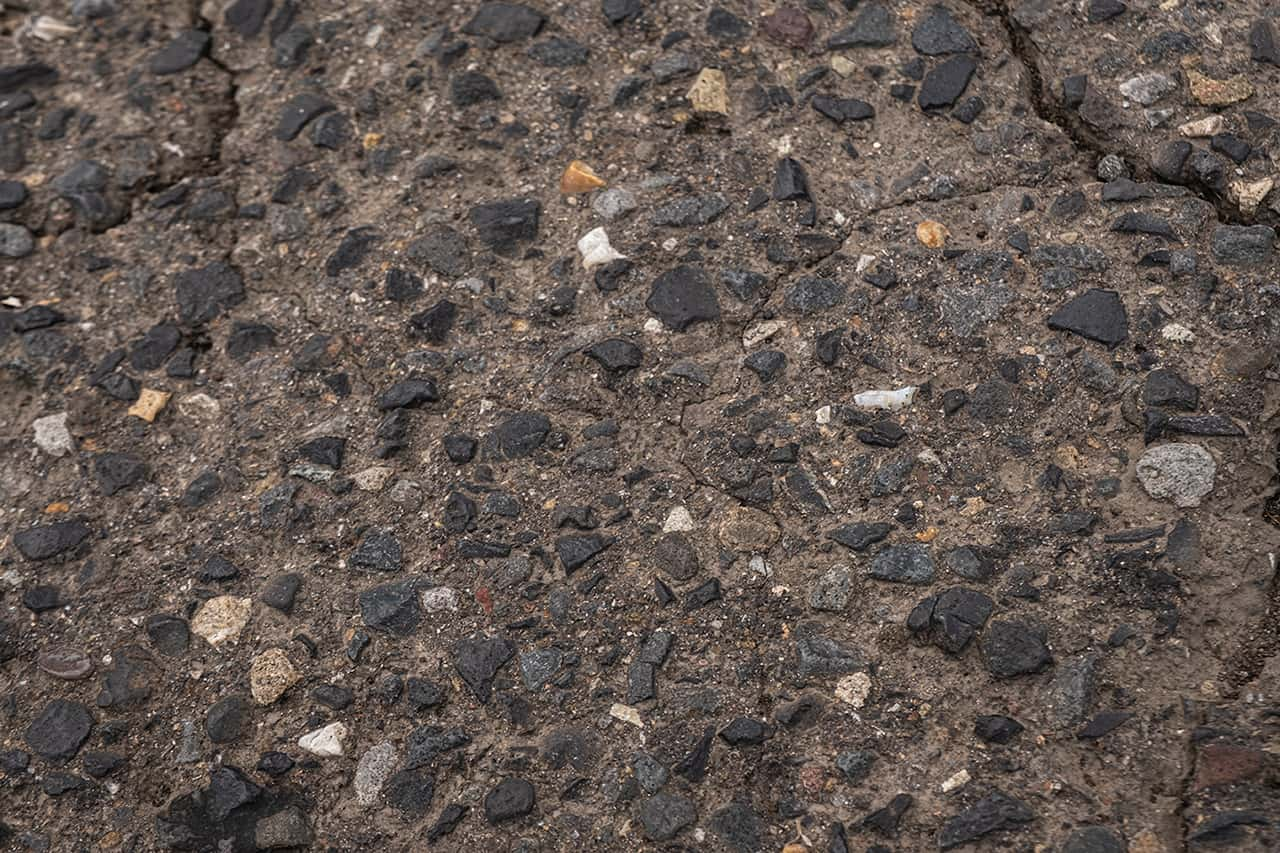
If the asphalt sealcoat has worn away, the aggregate is getting direct contact with vehicle tires. Over time this wears down the aggregate stone making the entire surface slick. Rubber tires will have a harder time getting traction on these degraded surfaces which can cause accidents. The surface also has more area for water to pool, resulting in vehicles hydroplaning over the surface.
Since this problem is only affecting the very surface of the road, a skid-resistant slurry seal or non-structural overlay can be added to the road surface to prevent future tire sliding.
Bleeding
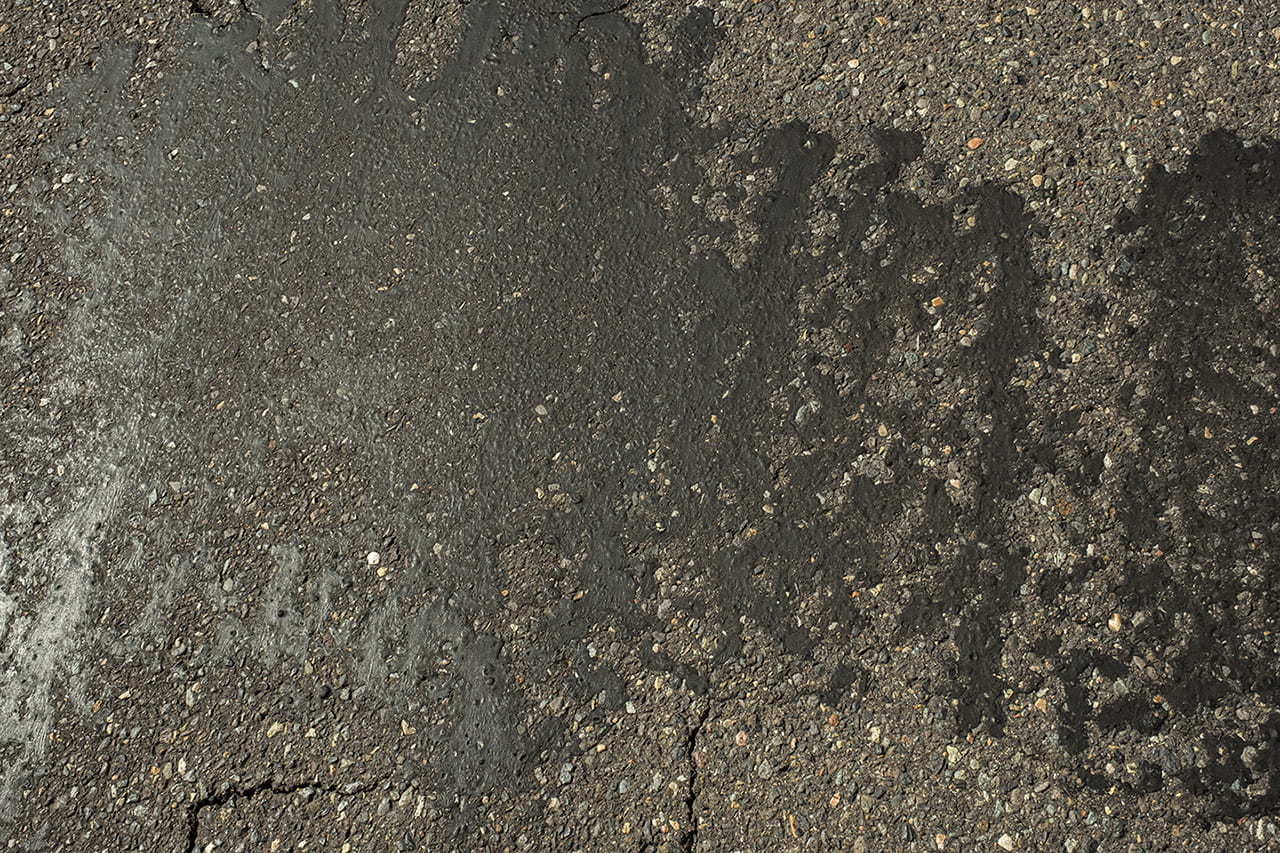
“Bleeding” is when the asphalt binder creates a smooth film on the pavement surface. It is typically shiny and black and is sticky to the touch when dry and slick when wet. This coating removes tire traction, making the roadway particularly dangerous is wet conditions. Bleeding is caused by asphalt binder filling voids in the aggregate when it is hot, and then expanding all the way to the pavement’s surface. Too much asphalt binder may have been added to the mix, or the mix has been designed wrong, producing greater voids in the aggregate for the binder to move through to the surface.
In small areas the excess asphalt binder can be absorbed with an application of course sand. If the bleeding affects a greater area of the road surface, a motor grader or heat planer may be needed for removal. If the entire surface is covered, it may be time to fully resurface the road.
Loss of Cover Aggregate
Cover Aggregate may be lost through a number of processes, most of which are problems in initial application. If the road is surfaced in too cold temperatures, or fast moving vehicles are allowed to drive over the surface before it has properly set, the aggregate will not have enough time to cure and will separate from the road surface.
If the aggregate is not properly set the road surface will need to be removed and replaced to prevent further disintegration of the road surface.
Streaking
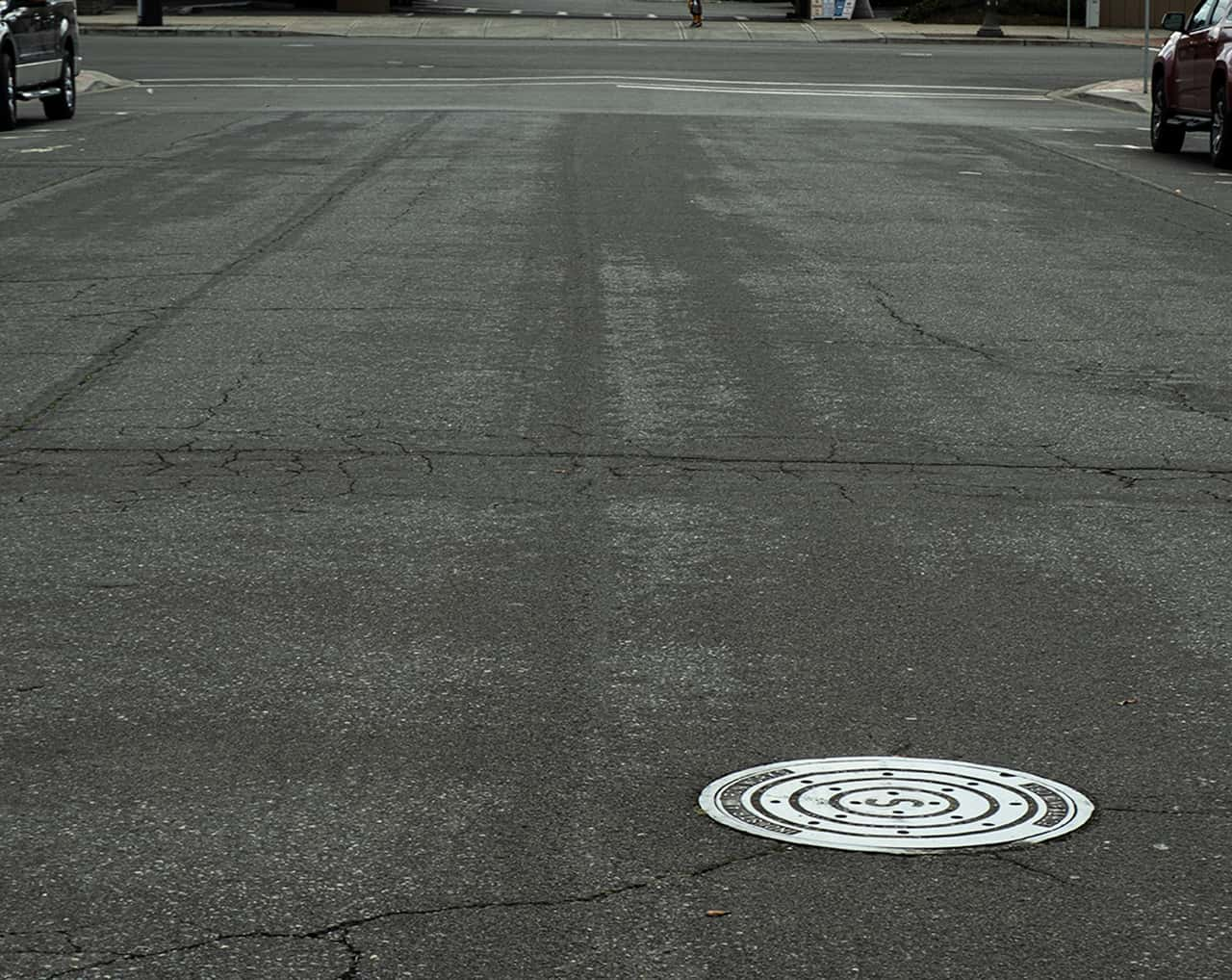
Streaking is the presence of alternating stripes of aggregate and asphalt along the pavement surface. These stripes are most likely caused by uneven application of the asphalt concrete layers. The asphalt may have been applied too cold, or the spray was not properly aligned allowing some areas with too much asphalt and other areas with too little.
To correct streaking, the road surface will need to be resealed, avoiding whatever issue caused the streaking in the first place.
Hopefully some of the mystery of road blemishes have now been revealed to you. With a little practice you will be able to “read the road” and know the reason behind common problems that affect asphalt and concrete surfaces. This information can also make you a better driver, steering your vehicle away from dangerous upheavals and potholes. A little knowledge could save you a lot of money, and catch concrete problems before they grow even more dangerous or expensive.
At Hal’s Construction we can remove and repair as much as 17,000 square feet of road surface the same day you call us. Our quick service can keep your business moving, repaving your parking lot, driveway, or road can be done in as little as one day, using proper techniques that won’t result in damage down the line. Give us a call for a quote today!



